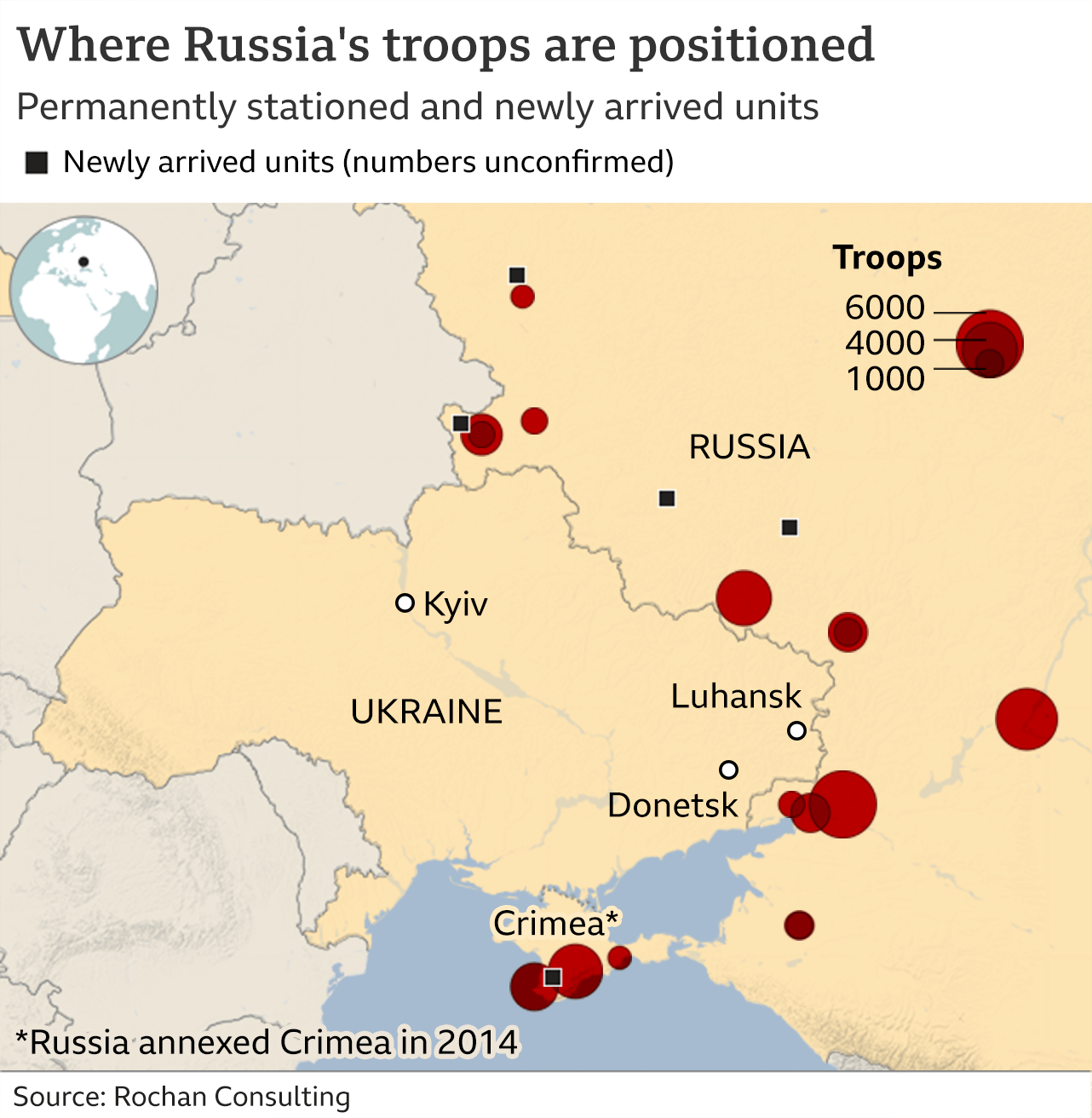US President Joe Biden has said there is “total unanimity” with European leaders over Russia’s troop build-up on the border with Ukraine.
During crisis talks on Monday, Western powers agreed to “swift” and “unprecedented” sanctions against Russia if it were to invade.
The US has also put 8,500 troops on alert.
Russia denies plans of an incursion, despite deploying some 100,000 soldiers on Ukraine’s border.
Joining the US and UK on the call were the leaders of France, Germany, Italy, Poland and the EU. The head of Nato, Jens Stoltenberg also dialled in.
“I had a very, very, very good meeting – total unanimity with all the European leaders,” Mr Biden said afterwards.
A Downing Street spokesperson said the leaders “agreed on the importance of international unity in the face of growing Russian hostility”.
Should a further Russian incursion into Ukraine happen, they agreed that “allies must enact swift retributive responses including an unprecedented package of sanctions”.
The aim of the 80-minute video call between the allies was to agree on a common strategy against Russia’s actions, after some disagreements over how Western nations were responding.
On Monday, UK PM Boris Johnson warned that “gloomy” intelligence suggests Russia is planning a lightning raid on the Ukrainian capital, Kyiv, and the UK started withdrawing some staff from its embassy there.
The US took a similar move, by ordering relatives of its embassy staff to leave.
But EU staff are to stay in place for now, with foreign policy chief Josep Borrell saying he would not “dramatise” the tensions.
There have also been differences on the support given to Ukraine – the US and UK are among the nations to have sent military aid. However Germany refused Ukraine’s request for defensive weapons, and will instead send medical aid, German Defence Minister Christine Lambrecht told local media.
US troops on high alert
The Pentagon has said some 8,500 combat-ready US troops are on alert to deploy at short notice.
But they would only be deployed if the Nato military alliance decides to activate a rapid-reaction force, “or if other situations develop”, said Pentagon press secretary John Kirby.
There are no plans to deploy to Ukraine itself, he added.
Some Nato members, including Denmark, Spain, France and the Netherlands, are already planning to send fighter jets and warships to eastern Europe to bolster defences in the region.
Over the weekend, some 90 tonnes of US “lethal aid” including ammunition for “front-line defenders” arrived in Ukraine.
The Kremlin has said it sees Nato as a security threat, and is demanding legal guarantees that the alliance will not expand further east, including into neighbouring Ukraine. But the US has said the issue at stake is Russian aggression, not Nato expansion.
Ukrainians prepare for possible invasion
For months now, the Ukrainians have been preparing a territorial defence force of volunteers. They are training for a possible defence of Kyiv.
One woman member, Marta Yuzkiv, a doctor in her 50s, told the BBC: “Of course I am worried. I am a peaceful woman, I don’t want to have a war started. But in any case, in case it’s started, I should be ready to defend the country.”
Andrei Volkov, an IT consultant in Kyiv, called the situation “dangerous”.
“The situation is extremely tense, I think something might happen,” he said, adding that he was making “contingency plans”.
“Going to western Ukraine I suppose, going somewhere where it’s going to be safe.”
Russia has seized Ukrainian territory before, when it annexed Crimea in 2014. After Russian forces seized control, Crimea voted to join Russia in a referendum the West and Ukraine deemed illegal.
Russian-backed rebels also control areas of eastern Ukraine near Russia’s borders. That conflict has cost an estimated 14,000 lives, with a 2015 peace deal a long way from being fulfilled.

